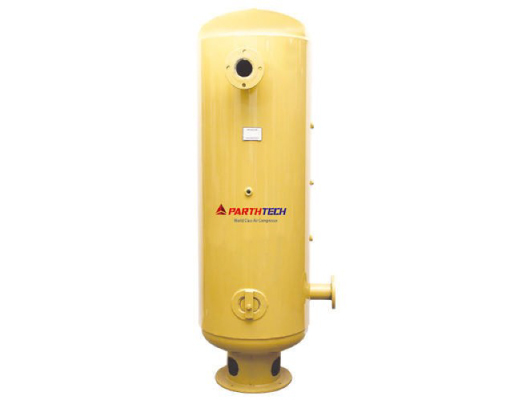-
Call
-
Whatsapp
9825014048
-
Location


Air Receiver
Air Receiver
Compressed air is a versatile resource with applications in a variety of industries, from manufacturing to healthcare and food processing. However, an essential component is often overlooked to ensure consistent and effective delivery of compressed air: an air intake. This article will explore the world of air receivers, examining their functions, benefits, and applications.
The air receiver, also known as the air storage unit, is an integral part of the compressed air system. It acts as a compressed air reservoir, allowing excess air to be stored and controlled. These archives are essential for several reasons.
Air Receiver Function in Compressed Air Systems
- Ventilation stabilization: Compressed air supplies air under stressful conditions, which can be problematic in applications that require continuous ventilation. Air receivers act as insulators, releasing compressed air accurately to meet demand, ensuring a constant supply.
- Energy savings: Air intakes promote energy efficiency by reducing compressor load. Instead of continuously running the compressor to meet peak demand, the receiver stores excess air at a lower demand. The stored air can then be used during periods of greater demand, reducing the need for the compressor to operate at total capacity.
- Water removal: Water evaporates when compressed air is used. Typically, intake systems have a mechanism for removing this water, preventing damage to downstream equipment and improving air quality.
- Vibration damping: Air compressors can induce vibrations in the supply chamber. Air receivers act as insulators, dampening these vibrations to provide a consistent and reliable compressed air flow.
How an Air Intake Works
Air receivers work on a simple principle. The compressed air flows through the compressor to the receiver. When the air in the system exceeds a preset limit, the pressure switch stops the compressor. Conversely, if the pressure drops below a certain point, the pressure switch restarts the compressor, refilling the receiver.
Air Intake Systems
- Construction: Air intakes are essential for the operation of pneumatic tools and machines, providing compressed air.
- Construction: Air intakes are commonly used on construction sites for power tools and equipment, such as jackhammers and nail guns.
- Health care: Air receivers are used in medical equipment, providing clean, dry air for patient care, diagnosis, and laboratory use.
- Food and Beverage: Compressed air is widely used in food and beverage processes such as packaging and quality control. Air intake guarantees an uninterrupted supply.
- Wastewater Treatment: Air conditioning systems for wastewater treatment plants use absorption gases to aid biodegradation.
- Energy Industry: Compressed air is used in various energy applications, from wind turbines to power plant operations.
Advantages of Using Air Intakes
- Stable airflow: Air receivers help maintain a consistent airflow, which is essential for applications that require accuracy and reliability.
- Energy efficiency: By reducing the load on the compressor, ventilation provides energy savings and extends the life of the compressor and other system components
- Vibration Control: Air intakes dampen airborne vibrations, which can be crucial in areas where constant pressure is essential.
- Moisture removal: Filters have multiple air intakes, improving air quality and equipment safety.
- Longer Equipment Life: By reducing work on the compressor and reducing cycling, air intakes extend the overall life of the compressed air system


FAQ

Frequently Ask Questions
The size of the air intake depends on your specific application and air requirements. Factors to consider include the number of pneumatic tools or equipment, critical pneumatic pressure, and frequency of use.
Yes, security is important. Air intakes must meet safety standards and be fitted with pressure regulators, pressure gauges and drains to ensure safe operation.
Yes, manufacturers often offer options to tailor air intakes to the needs of specific applications.
Routine maintenance includes checking for damage, checking that safety features work, and removing accumulated moisture. The frequency of maintenance depends on factors such as usage and environmental factors.
No. Air conditioners are used in a wide range of applications, from large industrial plants to small factories, even in some residential applications

